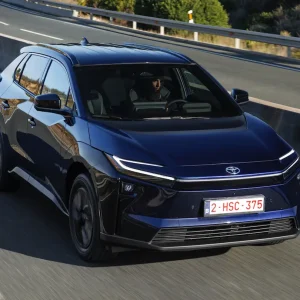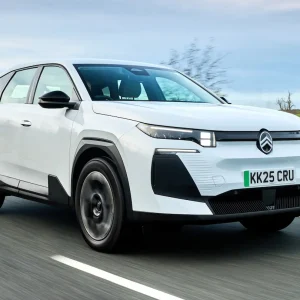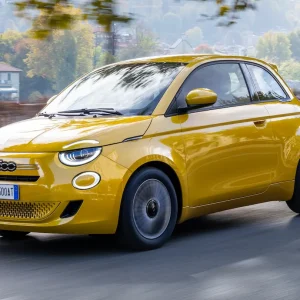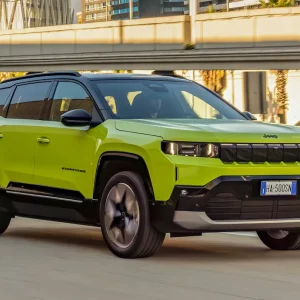The C-segment SUV marketplace is where Renault had previously played happily with the Nissan Qashqai-based Kadjar until it was discontinued last year. The Austral is its replacement, but it’s more than that. As Renault tells us, this is its first model built on the third-generation CMF-CD platform and, in hybrid form, it is unique to the Renault at the moment, with the aspiration being to conqueror this segment with this model.
Outside, although the Austral carries on styling cues first seen on the Megane EV last year, the design is more evolution than revolution. At the front, the heavily sculpted bonnet catches your eyes first, followed by the large, mouthy grille with the new Renault badge in the centre and then there’s the curvy, C-shaped Matrix LED front headlights.
At the side, there’s an upswept window line, distinctive lower cut out – which is shown off best with the Austral’s matt paint finishes – and almost blistered arches that are home to wheels up to 20in in size. At the back, there’s a high-set rear window, rear lights and light bar that stretch across the full width of the car and are a similar C-shape design to the headlights.
Inside, if you liked the Megane EV’s style, you’re going to feel right at home in the Austral. Made up of screens, the biggest is the 12.3in upright OpenR screen, which runs Google’s Android Automotive software, that is certainly easy to use and supports Apple Carplay. This links with the smaller 12in screen for instruments. There’s also the busy, almost oval multi-function steering wheel. Plus, what looks like an elbow rest where the gear change used to be on the high-centre console.
We only drove the range-topping Iconic Esprit Alpine equipment grade, and all the high-up plastics and trim seem in-line with the almost £40,000 price. There are certainly plenty of Alpine logos, although this is where the link with the iconic sports car manufacturer ends. It is not all good news, as when you look further down the cabin, the plastics get harder and scratchier.
Space in the back is generally good, and with the sliding rear bench, you’ve got the choice between this and a big boot (555 litres). Another Austral interior highlight is the punchy, premium Harman Kardon audio system fitted to top models.
Renault says that having perfected the E-Tech hybrid drivetrain; it is ideal for a C-segment SUV. It is made up of a 1.2-litre, three-cylinder turbocharged engine, with an electric motor and a 400V lithium-ion battery and a gearbox combining two-speeds in electric mode and four for the combustion engine. Together, they equal 197hp and 409Nm of torque.
On the road, the E-Tech self-charging hybrid system impresses. Starting in full electric, it smoothly shifts to ICE power as speed builds, then seems to cut in and out when needed. Whenever it does, the transitions are smooth unless you work the Austral harder – then it gets noisier. Although, it was hard to tell the differences between the drive modes.
We only got a short drive of this new Renault and the route was mostly urban, so it was difficult to judge the dynamics of the Austral. However, the steering with the clever 4CONTROL Advanced rear system seemed generally responsive, although a little dead around the straight ahead and there’s a bit of an odd sensation when the rear wheels were turning against you – but we’re sure this wouldn’t be an issue if you lived with the Austral for longer than we did.
More disappointing and highlighted on the urban test route, was the hard ride – although the Iconic Esprit Alpine cars we drove were with standard 20in alloy wheels. The ride got better as the speed increased, but never felt truly settled, which is a shame because for a taller car, body control was good.
We’d like to spend more time with the Austral and try some other trims to give a definitive verdict, but on first impressions, it’s an attractive, innovative SUV that needs more dynamic work.
Renault Austral 1.2 E-Tech Iconic Esprit Alpine
P11D: £36,480
Residual value: 41%
Depreciation: £21,524
Fuel: £6,506
Service, maintenance and repair: £2,563
Cost per mile: 50.98p
Fuel consumption: 60.1mpg
CO2 (BIK %): 106g/km (26%)
BIK 20/40% a month: £176/£353
Luggage capacity: 555 litres
Engine size/power: 1,199cc/197hp





